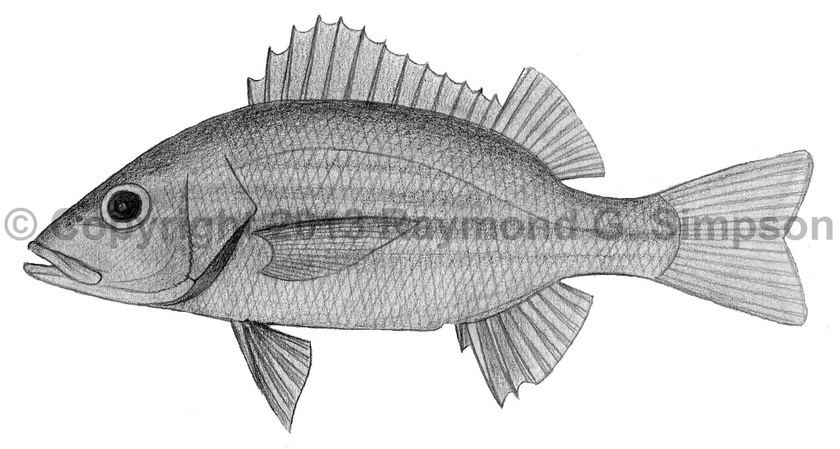
Common Name
Burro Grunt
Year Described
Cuvier, 1830
Identification
Dorsal Fin: XIII, 11-13
Anal Fin: III, 6-7
Gill Rakers: 7-9 (lower limb of first arch)
Lateral Line Scales: 53-55
Body oblong and compressed with a convex profile and projecting snout. Eye relatively large. Mouth moderate (maxillary reaches beyond anterior margin of eye). Soft dorsal and anal fins scaleless. Preopercle serrate. No notch between spiny and soft dorsal fin. Soft dorsal fin short and low. Second anal fin spine strong. The pectoral fins are relatively small. There are 5-6 scales above and 16 below lateral line.
Color
Body silvery, grading to whitish on the belly and dark gray dorsally. Juveniles with several faint bronze stripes (mid-lateral one being the best defined). Lateral line black. Fins bronze to brown.
Size
Maximum size to 33cm TL.
Habitat
Shallow, turbid inshore waters and estuaries. Frequently found well upstream in fresh water.
Range
Florida, the entire Caribbean Sea, and the continental coasts from the S. Gulf of Mexico to Brazil.
References
Bussing, W.A. 1998. Peces de las aguas continentales de Costa Rica [Freshwater Fishes of Costa Rica]. 2nd Ed. San José Costa Rica: Editorial de la Universidad de Costa Rica. 468 p.
Lindeman, K.C. 2002. Haemulidae (pp. 1522-1550). In: Carpenter. 2002. The living marine resources of the Western Central Atlantic. Vol. 3: Bony fishes part 2 (Opistognathidae to Molidae). FAO Species Identification Guides for Fisheries Purposes. American Society of Ichthyologists and Herpetologists Special Publication No. 5. FAO of the U.N., Rome.
Other Notes
This species and R. ramosus are frequently confused with each other. The limits of their ranges are not known, but specimens from Costa Rica are all identified as R. crocro (Bussing, 1998). R. crocro may be widespread in the Caribbean Sea.
Used to be classified in the genus Pomadasys.